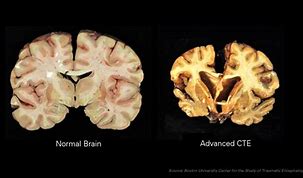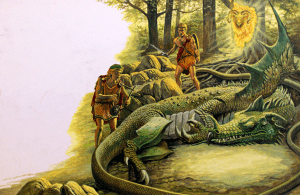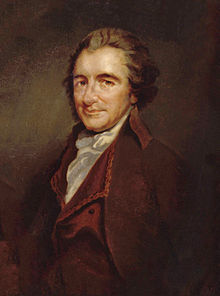Performing an autopsy on someone is like grabbing the untold stories under their skin or placing the puzzle of an unsolved death into your hands. Dr. Bennet Omalu, a Forensic Pathologist and Neuropathologist, was given an assignment at the Allegheny County coroner’s office in 2002 to examine former-NFL Pittsburg Steelers linebacker and legend Mike Webster. Omalu had never had much prior knowledge of the NFL or of the sport of football, so it became a surprise and a shock to most people when he claimed he didn’t know who Webster was.1

Omalu had no interest in watching pro football because he had already seen too many autopsies performed on NFL players, and he knew that the sport left major damages to their bodies. “There is no concept like a safe blow to the head… there’s no physician that would deny that,” said Dr. Omalu in an interview with the Physician Leadership Journal. There was never any previous set intention for Omalu to attack the NFL, or to cause conflict with them.2 What he was soon to know was that the NFL’s team of lawyers and the business itself was not something to mess with, and that they were out for blood.
Dying at the young age of fifty, eleven years after he retired from the NFL, Mike Webster’s autopsy showed that there was a noticeable amount of blemishes to the man’s body. Playing seventeen years in the NFL clearly took its toll on him; so much so that Dr. Omalu said, “If I had not been told his age, I would say he looked like 70.”3 Starting off at his cracked and misshapen feet, saying that they were “damaged” was an understatement. His family said Webster would duck tape them to suppress the damage. Stories were also told that Webster had some of his teeth fall out and instead of going to the doctor, he decided to put them back in with gorilla glue and go about his day.4
What really sprung Omalu’s interests was Webster’s receding hairline and damaged scalp. It was described as a “built up shelf of scar tissue” taken from all the head damage he had experienced in those years of football play. Omalu knew something had to have been wrong with the brain, like a serious form of dementia or something of the sort.5 He was well known for taking hits to the head, and his favorite part about football was when it was rough, muddy, and in the rain or cold. They called him “Iron Mike” as they also called the team lineup “The Steel Curtain.” In his last years, he started developing different personality traits, and wasn’t quite himself anymore. His family noticed that he became really confused when he spoke, and he also started to be less patient and more angry at simple tasks. He began living out of a pickup truck after his divorce, and couldn’t sleep for days, leading to the point to where he had a friend zap him with a taser in order for him to fall sleep.6 All this evidence left Omalu surprised when his brain didn’t have dementia or Alzheimer’s. Something wasn’t adding up. He decided to cut into the brain, and that’s when he discovered the abnormality. It was the world’s first ever confirmed case of Chronic Traumatic Encephalopathy (CTE).

CTE is a life threatening brain disorder that is caused by taking hard hits to the head consistently over a period of time. It is known to cause symptoms including confusion, forgetfulness, anger, and impulsive behavior, and it can completely change ones character. It can only be diagnosed at autopsy by scientists studying sections of the brain. There has been only a small amount of research available to scientists because of limitations of access to former athletes’ brains. These symptoms correlate to those affected having earlier death rates, and it is fatal to those who have this disease.7
Omalu decided that once he completed his report on Mike Webster, he would send it to the NFL’s Mild Traumatic Brain Committee, because he assumed it would be important information that they would probably want to have. The MTBI committee was formed by the NFL to study the science behind concussions and to understand the long-term effects of players from CTE. But instead of commending Omalu’s findings, the committee called for the paper’s retraction, disputed his published work, and began to go after his career with vengeance. Their scientists discredited all of his work, claiming that he was wrong, and saying that all of his evidence was “not scientific.”8 It would be a challenge to get the word out about the dangers of CTE because the NFL held great influence in the media. “You can’t go against the NFL; they’ll squash you,” said Omalu.
After denying Omalu’s work and discovery, they were further questioned by the media on CTE, and they proceeded to downplay any remarks made on it. They hired doctors that were biased to the NFL to respond to the questions asked by reporters about CTE. They stuck to the NFL’s claims about concussions, and said, “they are not serious injuries.” Reports even came out saying that if football athletes got diagnosed with a concussion, they could return that same game. They also denied any long-term problems from concussions sustained while playing football. They did anything they could to protect their business and not make football look like a dangerous sport. Peter Keating, a journalist, said that “the NFL has had the strategy of going nuclear any time it goes to court because the first time you ever lose, you open floodgates of potential billions of dollars at damage.”9
Years later, Neuropathologist Dr. Ann McKee took on the task of finding more cases of CTE, and out of twenty brains they examined, nineteen of them contained CTE. Some of those athletes never had a confirmed concussion in their career, so this led her group to believe that it can also be caused by sub concussive hits. These kind of hits don’t take a player out of a game, but it is this consistent amount that leaves them with this life-threating disease. “They’ll be heavily hitting their head against each other,” says Robert Stern, a Neuropathologist. “Those things seem to happen around 1000 to 1500 times a year. Each time is around 20G or more, which is the equivalent of driving a car 35 mph into a brick wall.”10
Coverage like this helped spark interest in Congress to ask why the MTBI had been taking so long to produce their research, and why they have been denying others’ research since 1994. In 2007, Representative Linda Sanchez really handed it to the NFL by stating, “The NFL reminds me of the tobacco companies pre 90’s.” The NFL immediately had to jump at fighting this claim, so the commissioner of the NFL Roger Goodell made some changes to the rule book designed to protect players from concussions. They also decided to donate to the Head’s Up program for youth athletes, and $30 million to the National Institutes of Health for them to further study this disease.11

4,500 retired NFL players also wanted to take a shot at holding the NFL accountable by filing a $2 billion lawsuit. They claimed the NFL had “fraudulently downplayed the danger to their brains.” Some of these players have suffered from dementia, depression, or Alzheimer’s due to playing football. Many report that they were rushed back into a game after having a concussion, and the NFL only wanted to profit off the players instead of getting them better first. The NFL denied any wrong doing, and insisted the top priority has always been their safety. The lawsuit ended just before the start of the 2013 season by settling with the NFL, who paid $765 million dollars to its former players.12
Omalu’s discovery opened the doors for many in the athletic community. It brought an eye-opening message to the NFL, football players and fans all across the US by exposing the dangers and long term effects. It challenged the knowledge of the NFL and called for a redirection in the values of our athletes’ health and their well being. Even though the NFL has never openly taken any responsibility for the past two decades of this disorder, Dr. Omalu and others have contributed to saving lives and to creating safer ways for athletes to play. Only time will tell what further progress can be made in understanding CTE, but once we can completely confirm that football leads to long term health problems and CTE, we can finally start taking steps in the right direction for the health of our beloved athletes.
- “Dr. Who Inspired Will Smith Film Speaks At UC Davis Commencement,” Patch (website), May 14, 2019, https://patch.com/california/davis/dr-who-inspired-will-smith-film-speaks-uc-davis-commencement. ↵
- Bill Steiger, “Meet Bennet Omalu, Md: The Physician Leader Whose Research Inspired the Movie Concussion,” Physician Leadership Journal 3, no. 2 (April 3, 2016): 8–10. ↵
- FRONTLINE PBS, Official, League of Denial (Full Film) | FRONTLINE, 2019, https://www.youtube.com/watch?v=SedClkAnclk. ↵
- FRONTLINE PBS, Official, League of Denial (Full Film) | FRONTLINE, 2019, https://www.youtube.com/watch?v=SedClkAnclk. ↵
- FRONTLINE PBS, Official, League of Denial (Full Film) | FRONTLINE, 2019, https://www.youtube.com/watch?v=SedClkAnclk. ↵
- “ESPN Classic – Former Steeler Webster Dies at Age 50,” ESPN (website), accessed May 2, 2021, https://www.espn.com/classic/obit/s/2002/0924/1435977.html. ↵
- “What Is CTE?,” Concussion Legacy Foundation (website), June 15, 2015, https://concussionfoundation.org/CTE-resources/what-is-CTE. ↵
- “Bennet Omalu,” Biography Mask (blog), January 4, 2021, https://biographymask.com/bennet-omalu/. ↵
- FRONTLINE PBS, Official, League of Denial (Full Film) | FRONTLINE, 2019, https://www.youtube.com/watch?v=SedClkAnclk. ↵
- FRONTLINE PBS, Official, League of Denial (Full Film) | FRONTLINE, 2019, https://www.youtube.com/watch?v=SedClkAnclk. ↵
- Daniel Engber, “Everyone Compares the NFL to Big Tobacco. Here’s Why the Analogy Doesn’t Work.,” Slate Magazine, March 31, 2016, https://slate.com/culture/2016/03/the-nfl-is-not-big-tobacco.html. ↵
- “NFL, Ex-Players Agree to $765M Settlement in Concussions Suit,” NFL (website), accessed April 20, 2021, https://www.nfl.com/news/nfl-ex-players-agree-to-765m-settlement-in-concussions-suit-0ap1000000235494. ↵



25 comments
Anissa Navarro
This article is well written and stays on track with the risks of football. I always knew football was dangerous because of the head injuries athletes can get, but I never truly understood the severity of the injuries. I knew multiple concussions can lead to diseases or disabilities but I had no idea that it could potentially reform the brain and excessively damage it. Reading this article had made me want to reach out to my friends who participate in football and to fear for what the sport can do to them. I’m sure ver the years the safety has improved but it was so alarming to read how one of America’s past times is that dangerous.
Charles Lares
This article is well written. It focuses on the biology of concussions in such a dangerous sport like football. Concussions affect the biology of the mind especially when a player endures a consecutive amount of concussions can affect behavior in anyone. Behavior tends to be changed after such injuries affect the neural processing speed which causes to irritate people much faster which is why dangerous sports such take these things seriously and not put it off when it can affect someone’s life.
Erick Velazquez
I’ve never heard about CTE before, but after reading your article it really gave me an insight on what it was! It’s definitely a very scary thing, and to think that research like this would be denied by MTBI is absurd! Though I do not watch football, I know how serious some injuries can get with sports, especially football.
Ariette Aragon
Very well-written and informative article! It is unfortunate and unprofessional that the NFL undermined these injuries and had their scientists wrongly refute Omalu’s study and claims. The NFL needs to get their priorities straight, which is first to protect their player’s health. It is not surprising that this really big association did not accept the claims made by ex-players and Omalu because sadly they only cared about their money and reputation.
Hali Garcia
I knew a little bit about what head injuries could do because of a book I read when I was in junior high and the beginning of the article reminded me of that book. The injuries that Mike Webster had astonish me because I do not watch sports but I know they have to have some horrible injuries. I was struck by how the NFL responded to Dr. Omalu’s report. I would have thought they take his findings into consideration but they attacked him.
Trenton Boudreaux
I’m not surprised that the NFL would resort to lawsuits against doctors in order to prevent the truth about CTE from getting out, as such information would cost them a lot of money. While I was aware of football being a dangerous sport, I didn’t realize it was this dangerous. Of course, I don’t watch any sport, so my exposure to topics on concussions is limited. Still, a fairly interesting article on a business that puts profit over the safety of their players.
Eliana Villarreal
I find it so sad that professionals in the NFL have undermined players’ injuries. Concussions are no laughing matter and should be treated more seriously and often. I am sure the football players understand the risks they take playing game after game for several years straight, but even sometimes it would be beneficial to them if someone or something, such as this awareness article, could step in as a reality check for them. It is so unfortunate too that the business side of situations does not take into account the human side of those same decisions. This was a great article and I hope it can educate football players and fans about the dangers of concussions.
Carlos Hinojosa
Concussion are serious injury back in high school I had two friends that took several bad hits. One was never the same mentally it felt like he wasn’t even the same person and the other his doctor said if he got another concussion he wasn’t sure if he could play again before the damage hurt other parts of the body. I remember watching the movie with Will Smith and I was extremely disappointed with what I saw from the NFL. Either way a Great article.
Roberto Soriano
I had read before about this specific topic, and it’s very interesting to see a more thorough research of this. As a viewer of this sport I think it is very important to implement more concussion protocols however due to the roughness of the sport there should also be other regulations put in place, like playing limitations in time or the roughness the sport has, the ethical question here would be will you keep killing this players in exchange to the money this sports brings in for the team owners and the industry. Hopefully there is a solution to this in the near future as a lot of players will suffer from this.
Mariah Podwika
As someone who played sports for a long time and spent a lot of time surrounded by sports, I knew that there were severe ramifications on the body after doing it for so long. I didn’t, however, know just how serious it was for extreme contact sports like football. The fact that so many NFL players suffer from CTE and don’t have treatment is crazy to me. So many people love to watch and play football, but there is such a serious and common injury that stems from the constant banging with the sport. I knew that the NFL tended to rush players back onto the field after injuries, but the fact that they even do it for brain injuries is crazy to think about. The mentality around sports, specifically football, will always be odd to me, and I think it’s interesting that people can still watch and play the game despite the risks that come with it.